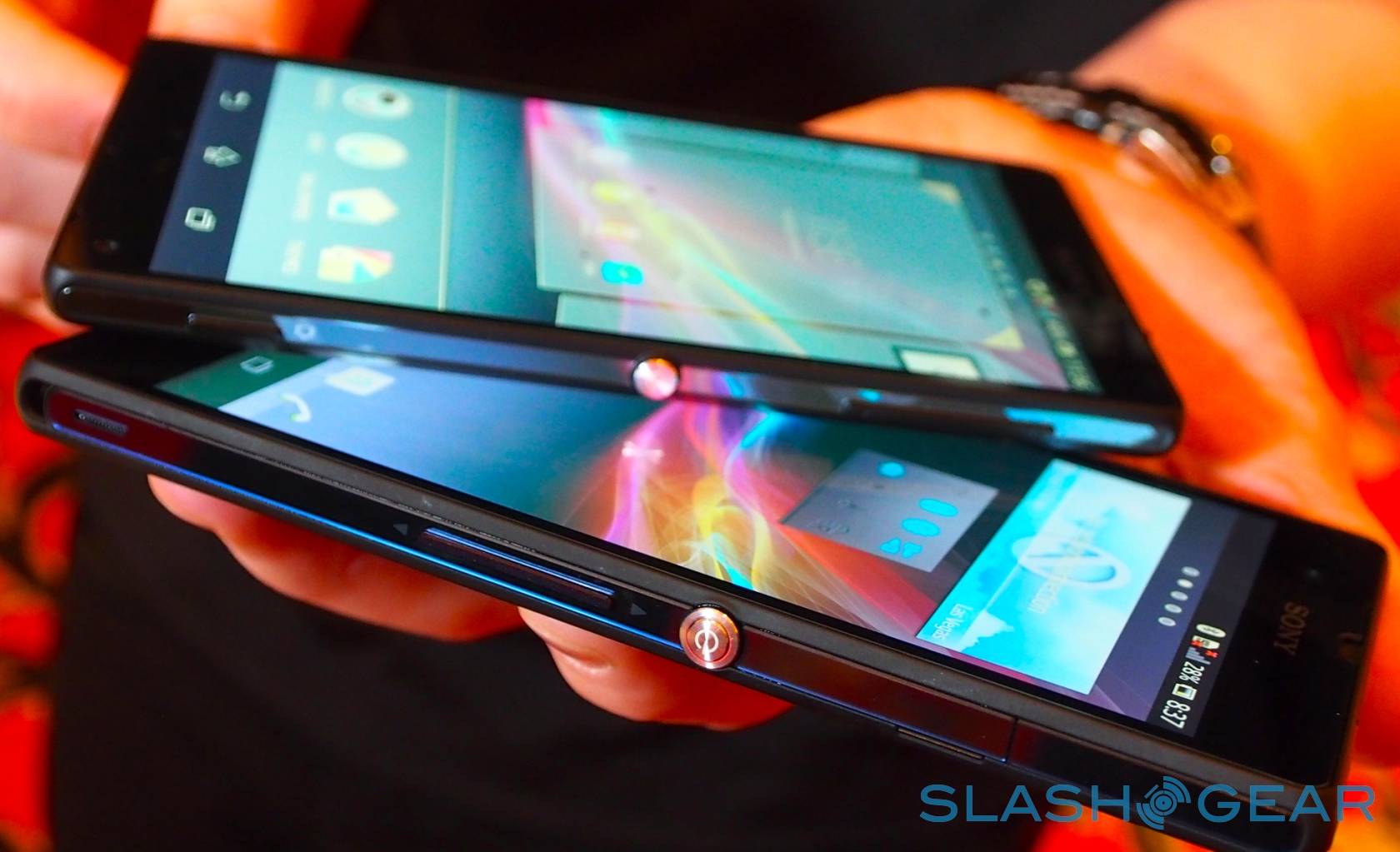
Sony has revealed its new flagship for 2013, the Sony Xperia Z, pairing a 5-inch Full HD display with a quadcore Qualcomm S4 Pro processor, 2GB of RAM, a waterproof chassis, and a 13-megapixel camera. The company has sprinkled a little of its Sony sparkle, too, bringing in the latest Mobile BRAVIA Engine 2 for improving screen quality, the Exmor RS sensor for photography – including HDR video, as well as stills – and a battery extending feature that could increase runtimes fourfold.
Sony’s style has evolved, happily, from previous Xperia phones: the Z ditches the cheaper-feeling plastic of before, in favor of shatterproof glass front and back, and inset glass-style strips along the gently curved edges. Even the power button has been refined, a milled nugget of aluminum that Sony believes will be more pleasing to the finger when it’s regularly stabbed at through the day. The whole phone comes in at 139 x 71 x 7.9 mm and 146g. It will last up to 30 minutes immersed in water.
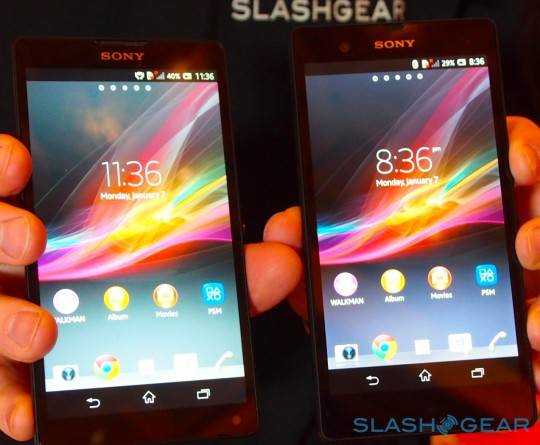
Inside, there’s Jelly Bean on Qualcomm’s S4 Pro APQ8064+MDM9215 quadcore with Adreno 320 graphics and 2GB of RAM. A 4.2 upgrade will come “shortly after” the global rollout begins sometime this quarter. Connectivity includes LTE and HSPA+ – local market depending – plus WiFi, Bluetooth 4.0, NFC, MHL-HDMI, aGPS/GPS/GLONASS, and a microSD card slot for up to 32GB cards. Internal storage is 16GB, and there’s NFC.
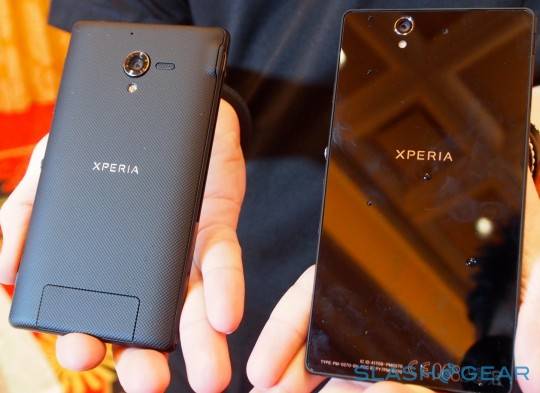
The 2,330 mAh non-removable battery is rated for up to 14hrs of UMTS talktime or up to 510hrs of LTE standby. Sony also uses a Battery STAMINA Mode which – by turning off all background data use when the screen is off, except for user-whitelisted apps – can increase the amount of time the phone will last by up to 4x. A dynamic runtime estimate shows predicted longevity based on user usage style and historic app demands.
Sony Xperia Z overview:
The camera supports 10fps burst photography at 9-megapixels, continuing to shoot for as long as you have battery life or storage space. There’s also both HDR photo and video support, and Sony’s Superior Auto mode pulled from CyberShot cameras. The display can automatically improve the quality of video in real-time, boosting contrast, colors, and crispness, with an effect that’s clearly visible.
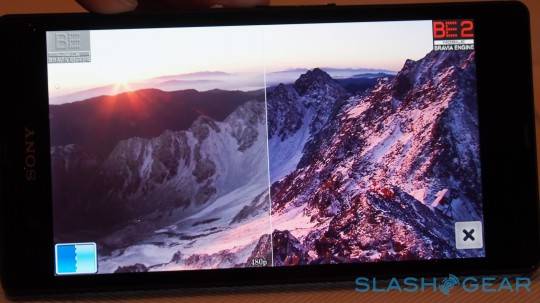
Sony is pushing NFC hard for its 2013 range, and not just in phones. The short-range wireless is used to quickly pair the new Stereo Bluetooth Headset SBH20 and Wireless Headset DR-BTN200M, but also works with the NFC-equipped remotes in Sony’s new TV range, to instantly pair them up for WiFi Direct video streaming.
Sony Xperia Z walkthrough:
A second version of the phone, the Sony Xperia ZL, will be offered in certain markets; it’s slightly shorter and slightly thicker, and isn’t waterproof. Both will begin a global rollout from Q1 2013, with pricing and availability to be confirmed later; Sony isn’t saying which US carrier(s) will get the Xperia Z, but the company did confirm to us that it will be launching in the country.
Sony Xperia Z hands-on:


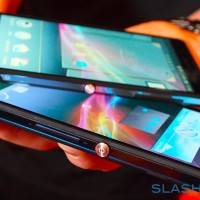


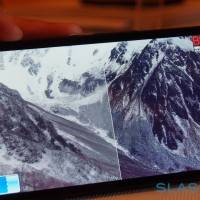
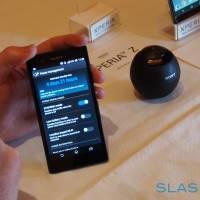


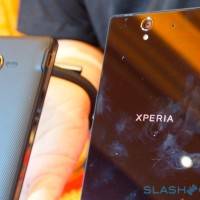
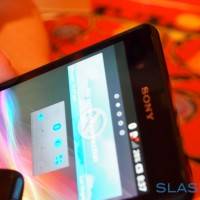
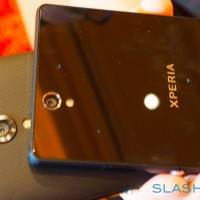
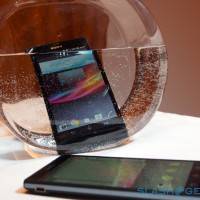

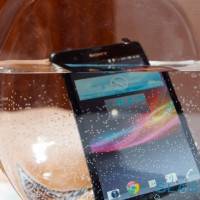










cant remove the battery? well thats a major drawback already!
what is need to remove a battery?it is not a problem , its advantage for user , to not to open a whole cover for a sim or sd .
Disadvantage for our environment and we might even see EU require all devices to have a non-sealed battery so it is replaceable by the consumers.
Ppl need to get over removing this battery stuff. Alot of phone r going this root. Get over it
And that is why HTC and Sony have phone issues now.Ever sense HTC desired to be like apple and start doing non removable batteries, I haven’t bought or thought about an HTC phone… or any other android phone that does not not a removable battery.And i was crazy for HTC back then. They were the best but times have changed. Sorry but i’m not paying crazy prices for when a batteries go up. Then got to buy a whole new device ….NOT!!!!. Removable battery please. Else Samsung and Lg have their way with you.
Even though I only do so sparingly, I also like the ability to exchange the battery (or put an aftermarket extended battery into the device).
The tradeoff is that phones with the battery sealed in are much easier to water and dust-proof, and I like that they opted to do this with the Z and ZL tremendously.
The everyday utility of these two features is hard to gauge but I think for making my future phone more “life prove” I might well forfeit a user-replacable battery (as long as the one that comes with the device is decently strong ofc).
I’m not sure this “Stamina mode” is such a good idea, UX-wise. Sure, it saves battery life by idling all app synch and thus enables the device to go into deep sleep for extended periods. On the other hand, when you wake up the phone and suddenly connectivity is back, every service that pushes or pulls will want to phone home.
I’m sure they thought about this, but I wouldn’t be surprised if this made for a bit of a choppy wake-up experience when you have lots of connected apps installed.
Completely unrelated question (and hoping this doesn’t sound creepy or anything): who is the girl at the table in the walkthrough clips?